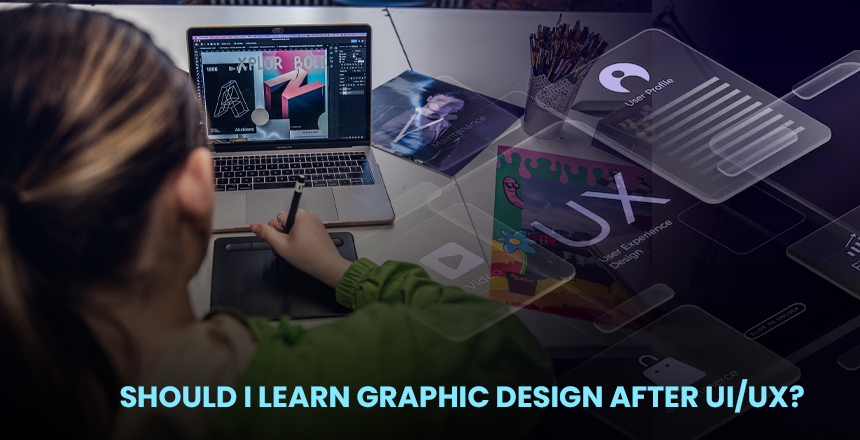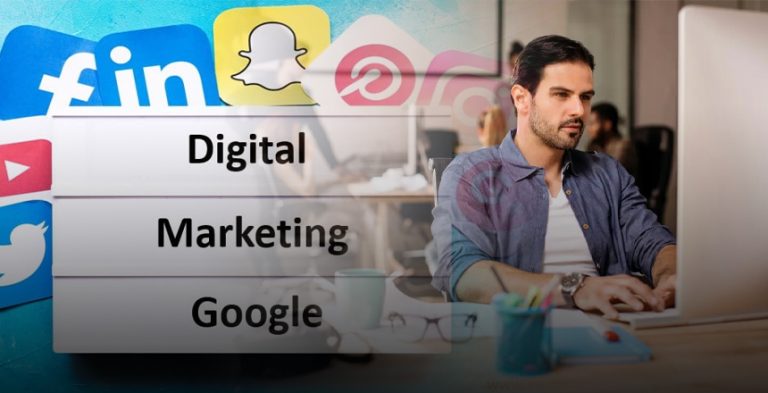- In the constantly growing space of digital design, UI/UX design and graphic design are two terms that always find themselves being mentioned in the same breath. While they meet at certain points, the purpose of both is very much different. If you ever studied UI/UX and now wonder, “Should I study graphic design?” You are not the first one. Many budding designers reach this crossroad.
- The short answer? Yes, but you should be strategic about it. Let us discuss then the ways that learning graphic design after UI/UX could prove to be a worthy profit for your skill set, how these two fields share an intertwined relationship, and whether it be the roadmap worth following for your goals. Differences Between UI/UX and Graphic Design
Before you decide whether UI-UX should learn graphic design, let’s see how these two differ.
UI/UX design:
- UX is about the user journey, usability, and the function of the product.
- UI is concerned with the look and feel of a digital product and how it acts.
- Figma, Adobe XD, Sketch, InVision.
- Skills: wireframing, prototyping, user research, information architecture, usability testing.
Graphic Design
- Centers around communication with visuals: making powerful images for both digital and print.
- Includes logos, branding, marketing, posters, social media marketings, and other projects.
- Tools: Adobe Photoshop, Illustrator, InDesign, and CorelDRAW.
- Key skills include typography, color theory, layouts, and visual storytelling.
While UI/UX is largely user-centered and functional, graphic design gets visual and communicative. Intertwining both streams gives you immense creative leverage.
Why Learn Graphic Design After UI/UX?
1. Stronger Visual Foundation
UX design is all about solving issues; however, without any strong visual sensibility, even the best wireframes can look rather bland. Learning graphic design helps you:
- Comprehend color psychology and visual harmony
- Use typography more effectually
- Create polished, on-brand interfaces.
- Thus, UI designs become neater, prettier, and very easy to use.
2. Great Cooperation with Image Team
If you’re in either a product or digital team, there will probably be instances where you’ll work with an actual graphic designer. Understanding their language – grids, contrast, composition – can help you:
- Communicate better.
- Give or receive design feedback.
- Get aligned on a particular creative direction more easily.
3. More Opportunities as a Hybrid Designer
Companies and startups are typically interested in multi-skilled creative. If you can design UI and develop brand identity and marketing visuals, you will surely become more valuable for a team with fewer resources.
Some roles combining those two skills:
- Product Designer
- Visual Designer
- Creative Director
- Freelance Designer
- Brand UX/UX Specialist
Graphic design is likely to increase the options for a person in this career and command better earnings for that.
4. Freelancing & Side Projects
The majority of UI/UX designers engage in freelancing or establish their own products. It will come in handy for the brand image, advertising material, or social media graphics that enable you to work with a client or launch your own business easily. Less time is spent outsourcing, and lots of time is captured on executing.
When You Might Not Need to Learn Graphic Design
Graphic designers’ skills are apt but may not be necessary for:
1. ones wanting to focus solely on UX research or strategy; visuals play less of a part there.
2. already collaborating with a dedicated graphic designer or team by having no overlapping roles.
3. thinking product rather than being into coding or interaction design where pictures are secondary.
All in all, even a cursory understanding of principles in graphic design will go a long way toward helping one become proficient at core UX/UI work.
How to Learn Graphic Design (Post-UI/UX)
If you are convinced and ready to try, this is how best to approach it:
1. Start with the Fundamentals
- Learn the following basic principles of:
- Typography and space
- Color Theory
- Layout and Composition
- Branding and Visual Hierarchy.
- Books such as “The Elements of Graphic Design” or “Thinking with Type” can be referred to.
2. Master Software for Design
- Viewport: You already know about Figma and perhaps Adobe XD from UI work; now it is time to dip your toes into
- – Adobe Illustrator (for designing logos and vectors),
- – Photoshop (for editing images), and
- – InDesign (for layouts and publishing).
3. Follow the Acceding Online Course
- Some well-known platforms are:
- Coursera: A portal to courses provided by the best universities.
- Skillshare: Short lessons based on projects.
- Udemy: Budget-friendly and great for beginners.
- Domestika: Great for artistic and branding-related design.
- Select part of the courses which are associated with real projects for building a visual portfolio.
4. Do Your Own Projects
- Redesign a brand. Create social media posts. Try poster design or album covers. These exercises will help you: Experiment with style Find your visual voice Create a fantastic portfolio for freelancing or creative work.
Final Summary
Should You Study Graphic Design After Completing a UI/UX Course? Yes – if your aim is to be a truly complete designer. The two areas are becoming increasingly closely tied: because of this willingness to create a seamless experience, brands now want the UI/UX to be as incredible as the rest of their experience. And so learning graphic design takes you another step away from just problem-solving and into storytelling and brand building.
While not essential for every UI/UX designer, learning this visual design could set you apart in the increasingly crowded competitive design arena. In other words, this helps boost your prospects both creatively and professionally. The Bottom Line Learning graphic design after UI/UX is more than learning something new; it’s about expanding one’s creative toolbox. You’ll be able to design for clarity and beauty, function and feeling. Whether you freelance or seek a job or innovate a product, understanding UI/UX combined with graphic design sets you up to design experiences that aren’t just usable, but unforgettable.








